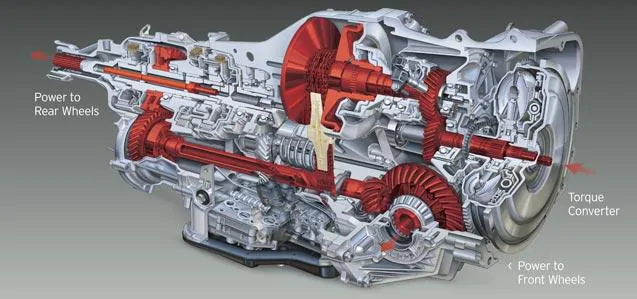
COMPARING SUBARU MANUAL TRANSMISSIONS
The 5-speed transmission was considered weak due to its narrow gears and shallow teeth, often breaking under mild use. In 2003, improvements were made, including upgraded gear width, enhancing the strength of the teeth, first in the Legacy GT then in the WRXs. However, the real game-changer was the 6-speed transmission released with the STI in 2004. Renowned for its durability and ability to hold significant power (800wtq+ with an upgraded clutch), many Subaru owners, prefer the 6-speed transmission for power holding. The STI’s 6-Speed transmission also featured a DCCD (Driver’s Control Center Differential), which enabled the driver to adjust the center differential to suit their driving style. It had six modes and an Auto Mode that optimally distributed power to the front and rear wheels. In 2015, the WRX transitioned to a cable-driven 6-speed transmission, which, although able to endure higher torque compared to the previous 5-Speeds, offered a less satisfying gear shift sensation.
UNDERSTANDING TIRES AND THEIR TECHNOLOGY

Tire production involves bonding rubber to fabric plies and steel cords. Despite anti-aging ingredients in the rubber, tires are perishable and some might age before their treads wear out. Previously, in the 70s and 80s, tires offered fewer miles and years of service than today. With advancements in technology, modern tires provide up to 80,000 miles of treadwear. However, it’s difficult to predict a tire’s lifespan based on age alone. Tires stored properly and not mounted on a wheel age slowly. Usually, they have a service life of six to ten years.
Many European car manufacturers caution against using tires older than 6 years. American companies, like Chrysler, Ford, and General Motors, also recommend replacing original equipment tires after six years. However, these recommendations are mainly for tires that go into service immediately after production, not those stored properly in warehouses.
The British Rubber Manufacturers Association suggests not using tires over six years old and replacing all tires ten years from manufacture. The Japan Automobile Tire Manufacturers Association also advocates for inspection after five years of use and replacement after ten years. Conditions such as sunlight exposure, coastal climates, poor storage, and infrequent use can accelerate tire aging. The U.S. National Highway Traffic Safety Administration and tire manufacturers are studying further on the variables influencing tire lifespan.
TIRE LIFE VS PERFORMANCE

Tire tread, the only part of the tire that directly contacts the road, gradually wears down with use, a process known as tread wear. This term also signifies the anticipated lifespan of a tire. The tread wear rating, typically inscribed on the tire’s side, can range from under 200 to over 800 based on the government’s UTQG rating system. This rating provides an estimate of the tire’s longevity and wear resistance; lower ratings indicate higher wear and consequently, a shorter tire lifespan. However, in specific scenarios like racing or high-grip/horsepower applications, the performance of a lower tread wear tire may be more desirable than its longevity. For general street use, tires with high tread wear ratings are usually recommended as they can withstand varying conditions over time. Notably, a driver’s habits can significantly influence tire wear, leading to either premature wear or extended longevity.
NOTHING IS STANDARDIZED

Your tire’s sidewall displays valuable data such as Treadwear, Rim Diameter Size, Tire Width, Tire Aspect Ratio, Radial Construction, Load Index, and Speed Rating. Treadwear denotes the expected lifespan of your tire, while tire width is the measurement from one side of the tire to the other. Radial Construction pertains to the tire’s structure, Load Index represents the maximum weight it can support, and Speed Rating indicates its safe top speed. These are key considerations when purchasing new tires for your vehicle.
However, sizing standards aren’t universally implemented by all manufacturers. Despite having similar figures, the tire aspect ratio of a Continental tire may not correspond to that of a Toyo tire, leading to potential fitment and ride quality issues.
Moreover, tire sizes significantly impact a vehicle’s handling dynamics and ride comfort. For instance, tires with tall sidewalls offer a smoother ride over bumps but may affect steering responsiveness. Likewise, skinny tires may provide better traction in snow due to their reduced surface area allowing them to dig into the snow, yet this same feature might limit grip on dry surfaces.
SMOOTH ROTATION

Traditional tire balancing is important for eliminating vibrations caused by imbalances in a vehicle’s tires and wheels. However, traditional balancing has its limits. For example, it cannot measure the amount of force that a tire throws off while in motion and weighed down by the vehicle. That’s where road force balancing comes in. Road force balancing is where wheels or tires have pressure applied to them to mimic how the tire would perform under real on-the-road conditions. As a result, a road force balancer can measure the amount of force the tire can throw off. – Automotive Training Centers